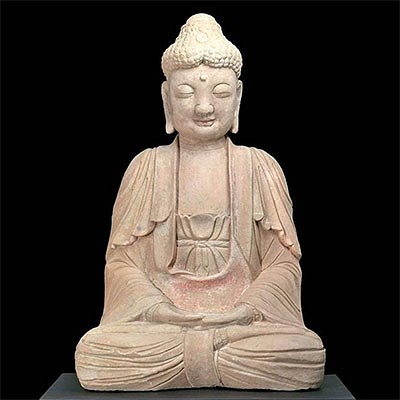Vera Cruz Stone Hacha of Warrior
Lot 123b
About Seller
Artemis Fine Arts
686 S Taylor Ave, Ste 106
Louisville, CO 80027
United States
Selling antiquities, ancient and ethnographic art online since 1993, Artemis Gallery specializes in Classical Antiquities (Egyptian, Greek, Roman, Near Eastern), Asian, Pre-Columbian, African / Tribal / Oceanographic art. Our extensive inventory includes pottery, stone, metal, wood, glass and textil...Read more
Estimate:
$5,000 - $8,000
Absentee vs Live bid
Two ways to bid:
- Leave a max absentee bid and the platform will bid on your behalf up to your maximum bid during the live auction.
- Bid live during the auction and your bids will be submitted real-time to the auctioneer.
Bid Increments
| Price | Bid Increment |
|---|---|
| $0 | $25 |
| $300 | $50 |
| $1,000 | $100 |
| $2,000 | $250 |
| $5,000 | $500 |
| $10,000 | $1,000 |
| $20,000 | $2,500 |
| $50,000 | $5,000 |
| $100,000 | $10,000 |
| $200,000 | $20,000 |
About Auction
By Artemis Fine Arts
Feb 18, 2021
Set Reminder
2021-02-18 10:00:00
2021-02-18 10:00:00
America/New_York
Bidsquare
Bidsquare : Exceptional Antiquities, Asian, Ethnographic
https://www.bidsquare.com/auctions/artemis-gallery/exceptional-antiquities-asian-ethnographic-6373
Museum-worthy examples of Egyptian, Greek, Roman, Etruscan, Near Eastern, Far East / Asian, Pre-Columbian, African / Tribal, Oceanic, Native American, Spanish Colonial, Russian, Fossils, Ancient Jewelry, Fine Art, so much more! Artemis Fine Arts info@artemisfinearts.com
Museum-worthy examples of Egyptian, Greek, Roman, Etruscan, Near Eastern, Far East / Asian, Pre-Columbian, African / Tribal, Oceanic, Native American, Spanish Colonial, Russian, Fossils, Ancient Jewelry, Fine Art, so much more! Artemis Fine Arts info@artemisfinearts.com
- Lot Description
Pre-Columbian, Mexico, Vera Cruz/Veracruz, ca. 700 to 900 CE. Carved on both sides, from a single piece of limestone that is inherently beautiful, boasting rose and taupe hues, a ceremonial hacha depicting a human visage - that of a warrior given his helmet - in profile and of an overall flat form to resemble a symbolic axe. At the same time, please note that the sculptor provided strong details, delineating the subject's features - his parted lips, full nose, circular eyes, stylized brows and jawline - beneath his grand helmet which presents two raised adornments and an openwork stepped motif that was intended for attachment. Size: 8.125" W x 8.875" H (20.6 cm x 22.5 cm)
Hachas were associated with the ritual Mesoamerican ballgame, though they were not actually part of the player's equipment. Instead these were worn during ritualistic ceremonies related to the game. The name stems from the fact that they were believed to be axe-heads; hence the term hacha (Spanish for axe). Having studied ceramic figures and imagery on stone carvings, some scholars have proposed that hachas were meant to be attached to yugos (yokes). Others have suggested that some hachas likely served as ballcourt markers.
Provenance: private New York collector from 1966
All items legal to buy/sell under U.S. Statute covering cultural patrimony Code 2600, CHAPTER 14, and are guaranteed to be as described or your money back.
A Certificate of Authenticity will accompany all winning bids.
We ship worldwide and handle all shipping in-house for your convenience.
#162120Repaired from two large pieces, the breakline running across the nose, lower eye, and lower headdress. Chips/nicks and abrasions to peripheries and high-pointed areas commensurate with age.Condition
- Shipping Info
-
All shipping is handled in-house for your convenience. Your invoice from Artemis Gallery will include shipping calculation instructions. If in doubt, please inquire BEFORE bidding for estimated shipping costs for individual items.
-
- Buyer's Premium



 EUR
EUR CAD
CAD AUD
AUD GBP
GBP MXN
MXN HKD
HKD CNY
CNY MYR
MYR SEK
SEK SGD
SGD CHF
CHF THB
THB














